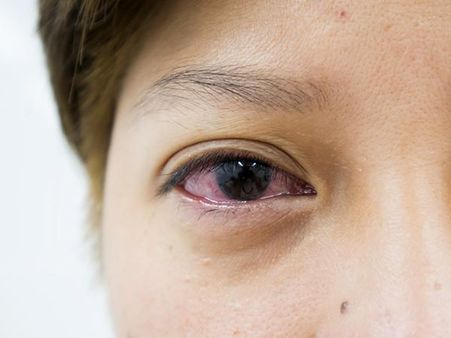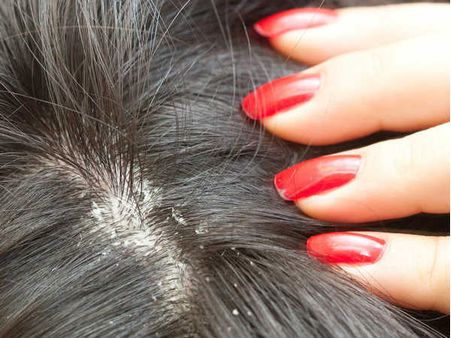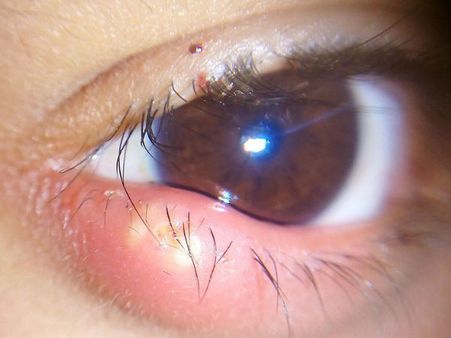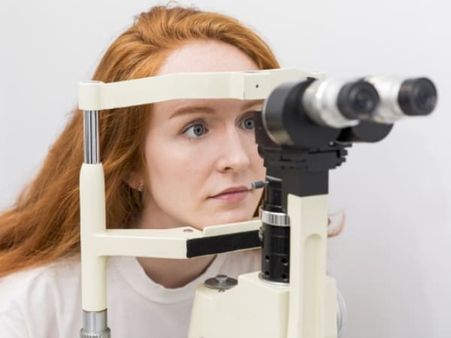Just In
- 2 hrs ago

- 2 hrs ago

- 4 hrs ago

- 12 hrs ago

Don't Miss
- News
 PM Modi Runs 'School Of Corruption', Teaching 'Entire Corruption Science': Rahul Gandhi
PM Modi Runs 'School Of Corruption', Teaching 'Entire Corruption Science': Rahul Gandhi - Finance
 Senior Citizens Benefits: Top Banks Offer High FD Interest Rates
Senior Citizens Benefits: Top Banks Offer High FD Interest Rates - Sports
 IPL 2024: Robin Uthappa On What Could Be The Only Factor Stopping MS Dhoni From Playing Beyond This Season
IPL 2024: Robin Uthappa On What Could Be The Only Factor Stopping MS Dhoni From Playing Beyond This Season - Movies
 Metro In Dino: When Ananya Panday Warns Sara Ali Khan Not To Touch Aditya Roy Kapur As She Pairs Up With Him
Metro In Dino: When Ananya Panday Warns Sara Ali Khan Not To Touch Aditya Roy Kapur As She Pairs Up With Him - Technology
 Garena Free Fire Max Redeem Codes for April 20, 2024: Get Access to the Latest In-game Loot
Garena Free Fire Max Redeem Codes for April 20, 2024: Get Access to the Latest In-game Loot - Automobiles
 Ford Mustang 60th Anniversary Package – Limited To Just 1,965 Units
Ford Mustang 60th Anniversary Package – Limited To Just 1,965 Units - Education
 Exam Pressure Does Not Exist; Studying Punctually is Crucial; Says Aditi, the PSEB 2024 Topper
Exam Pressure Does Not Exist; Studying Punctually is Crucial; Says Aditi, the PSEB 2024 Topper - Travel
 Journey From Delhi To Ooty: Top Transport Options And Attractions
Journey From Delhi To Ooty: Top Transport Options And Attractions
Blepharitis (Eyelid Inflammation): Causes, Types, Symptoms, Diagnosis & Treatment
A common but undiagnosed condition, blepharitis affects people of all ages and it is more common in people who are above the age of 50 [1]. Blepharitis is an inflammatory condition that mostly affects the eyelids. In this article, we will discuss what causes blepharitis, how it's treated and how it can be prevented.
What
Is
Blepharitis?
[2]
The eyelids are the folds of the skin that cover the eyes and act as a shield by protecting the eyes from dirt and injury. At the edge of the eyelids, there are hair follicles that contain oil glands, these oil glands can become clogged which can trigger certain eye disorders like blepharitis.

What
Causes
Blepharitis
[2]
The
exact
cause
of
blepharitis
is
unknown,
but
different
factors
increase
the
risk
of
blepharitis,
which
includes
bacterial
infection,
malfunctioning
oil
glands,
eyelash
mites,
dandruff
of
the
scalp
and
eyebrows
(seborrheic
dermatitis)
and
allergy
reactions
to
eye
medications.
Blepharitis
isn't
usually
contagious
and
doesn't
cause
any
damage
to
eyesight.


Types Of Blepharitis
• Anterior blepharitis - It occurs on the outside of the eyelids, where your eyelashes are attached. It is caused either due to dandruff on the eyebrows or allergic reactions in the eyes [3].
• Posterior blepharitis - It occurs on the inner edge of the eyelids that touches the eyeball. Posterior blepharitis is a result of a malfunctioning oil gland. As a result, the glands become inflamed and produce excessive amounts of oil that become clogged in your eyelids. Posterior blepharitis can also occur due to acne rosacea, allergic conjunctivitis and eczema [4].

Symptoms Of Blepharitis
•
Red
eyes
•
Watery
eyes
•
A
burning
or
stinging
sensation
in
the
eyes
•
Itchy
eyelids
•
Red,
swollen
eyelids
•
Greasy
eyelids
•
Sensitivity
to
light
•
Sticky
eyelids
•
A
feeling
that
something
is
inside
the
eye
•
Flaking
and
crusting
at
the
base
of
the
eyelashes.
The symptoms become worse in the morning and you experience crusting of the eyelids as you wake up [5].


Risk Factors Of Blepharitis
•
Dandruff
•
Acne
•
Dry
skin
•
Poor
hygiene
•
Diabetes
•
Old
age
•
Cosmetics

Complications Of Blepharitis
• Dry eyes - When the debris and oil shed from the eyelids, they can accumulate in your tear film - the water, oil and mucus solution that form tears. This can interfere with the healthy lubrication of your eyelids eventually causing dry eyes [6].
• Sty - It is an infection that develops near the eyelash base, causing a painful lump on the outside of your eyelid.
• Eyelash problems - Blepharitis can lead to falling out of eyelashes.
• Conjunctivitis - Blepharitis can cause recurrent episodes of conjunctivitis [7].
• Eyelid skin problems - Long-term blepharitis causes scarring of the eyelids.
• Chalazion - It happens when one of the oil glands at the margin of the eyelid gets blocked, which causes the gland to become infected with bacteria [8].
When To See A Doctor
If you have the above-mentioned symptoms that are not going away, you should consult a doctor immediately.


Diagnosis Of Blepharitis
The doctor will ask about your symptoms, medical history and examine your eyelids through some tests which include the following:
- Slit-lamp examination - Slit lamp is a low-power microscope which emits thin-beam light that allows the doctor to look outside of the eyes and eyelids.
- Swabbing skin for testing - The doctor may also use a swab to collect a sample of the oil formed in your eyelid. This sample is then analysed to see if there is any bacteria or fungi [9].

Treatment Of Blepharitis
• Eyelid hygiene - It is considered the foremost effective treatment for blepharitis. Eyelid hygiene treatment is done by applying a warm water compress on the eye for 5 to 10 minutes to clear the oil, debris and dilate the oil glands. After which, the eyelids should be gently washed by dipping a cotton ball soaked in diluted baby shampoo to eliminate the scales and debris. For treating posterior blepharitis, massage the eyelids gently with a cotton ball or finger in small circular patterns to dilate the oil glands. The eyelid hygiene treatment should be done two to four times daily [10].
• Antibiotics - Doctors will prescribe antibiotics that may treat blepharitis and provide relief from symptoms. These antibiotics are available in eye drops, cream, and ointments.
• Intense pulsed light therapy (IPL) - This treatment procedure uses pulses of light to liquefy and release hardened oils that have clogged the glands in the eyelids. IPL reduces eyelid redness and stimulates healthy gland function [11].
• Electrochemical lid margin debridement - It is a hand-held electromagnetic device that is used in the eyelid margins. It has a spinning surgical-grade sponge tip that is glided along the eyelids, and it effectively eliminates debris and biofilm, leaving the eyelid margins clean [12].
• Thermal pulsation treatment (Lipiflow) - This procedure liquefies and opens the clogged oil glands by gently heating and massaging the inner and outer eyelid. After this treatment, the oil glands resume normal oil production [13].

Prevention Of Blepharitis
•
Clean
your
eyes
regularly.
•
Remove
eye
make
up
before
bedtime
•
Avoid
touching
your
eyes
with
dirty
hands.
Common FAQs
Q. Is blepharitis contagious?
A. No, blepharitis isn't contagious.
Q. What happens if blepharitis is left untreated?
A.
If
blepharitis
is
not
treated,
it
can
lead
to
keratopathy,
corneal
neovascularisation
and
corneal
ulceration.
Q.
How
long
does
blepharitis
take
to
clear
up?
A. If blepharitis doesn't go away with eyelid hygiene management, antibiotics and steroids are used and it needs to be used as prescribed by the doctor.
-
 pregnancy parentingWhite Lung Syndrome: What Are The Symptoms Of The Disease Rampant In China? How Does It Spread?
pregnancy parentingWhite Lung Syndrome: What Are The Symptoms Of The Disease Rampant In China? How Does It Spread? -
 healthWorld HIV/AIDS Day: What Is The Difference Between HIV and AIDS?
healthWorld HIV/AIDS Day: What Is The Difference Between HIV and AIDS? -
 healthDengue 101: Causes, Symptoms, Risks, Complications, Treatment, Prevention, Diet And More
healthDengue 101: Causes, Symptoms, Risks, Complications, Treatment, Prevention, Diet And More -
 healthDiarrhoea 101: Causes, Symptoms, Risks, Complications, Treatment, Prevention, Diet And More
healthDiarrhoea 101: Causes, Symptoms, Risks, Complications, Treatment, Prevention, Diet And More -
 health'Epileptic Nightmare' of Neurocysticercosis: The Hidden Epidemic of Parasites Causing Epilepsy
health'Epileptic Nightmare' of Neurocysticercosis: The Hidden Epidemic of Parasites Causing Epilepsy -
 pregnancy parentingLife-Threatening Risk During Pregnancy: Sepsis Can Harm Both Mother and Baby
pregnancy parentingLife-Threatening Risk During Pregnancy: Sepsis Can Harm Both Mother and Baby -
 healthStay Informed: The Hidden Dangers of Legionnaires' Disease and How to Prevent It
healthStay Informed: The Hidden Dangers of Legionnaires' Disease and How to Prevent It -
 healthMyths vs Facts: Can A Single Mosquito Bite Really Give You Dengue?
healthMyths vs Facts: Can A Single Mosquito Bite Really Give You Dengue? -
 healthTop 5 Reasons For Vaginal Rash: When You Should See A Doctor
healthTop 5 Reasons For Vaginal Rash: When You Should See A Doctor -
 healthCan Inhaling Menthol Help Improve Memory For Alzheimer's Disease?
healthCan Inhaling Menthol Help Improve Memory For Alzheimer's Disease? -
 healthWorld Vitiligo Day 2023: Are You At Risk Of Developing Vitiligo?
healthWorld Vitiligo Day 2023: Are You At Risk Of Developing Vitiligo? -
 beautyFather's Day 2023: Stretch Marks In Men, Causes And Treatments
beautyFather's Day 2023: Stretch Marks In Men, Causes And Treatments


 Click it and Unblock the Notifications
Click it and Unblock the Notifications



